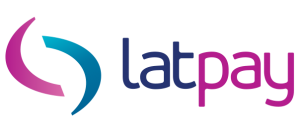How to prevent chargebacks
Knowing what a chargeback is and understanding how it works can be confusing, but it doesn’t have to be. We’re here to break down chargebacks and provide you with solutions to avoid them.
What is a chargeback?
A chargeback, or a payment dispute, is a transaction reversal that occurs when a cardholder disputes authorising a payment or deems a transaction fraudulent. An investigation will then be actioned, and if you, as the merchant, cannot prove the cardholder authorised the transaction, the bank will withdraw the funds from your account and deposit them back into the cardholder’s account.
What causes a chargeback?
Unfortunately, there can be a variety of reasons that may cause a chargeback. Here are just some of the possible causes for issuing a chargeback:
- No authorisation
- Duplicate payment
- Incorrect transaction amount
- Incorrect currency code
- Merchant fraud
- Late presentment
- Processing or authorisation errors
What are the impacts of chargebacks on merchants?
When a chargeback is initiated and the transaction is withdrawn from your account, there can be several impacts on you and your business. These are just some examples:
- Loss of income, even if you’ve already provided the goods or services
- You may be liable for chargeback fees, which in some cases can equal up to two and a half times the original transaction amount
- Chargeback to transaction ratios exceeded, which can result in lengthy mitigation programs
- In extreme cases, loss of your accounts due to too many chargebacks
How can you avoid chargebacks?
To avoid paying excessive fees on top of the loss of the transaction income, you should look for ways to prevent chargebacks in the first place.
In many cases, the best and easiest way to avoid chargebacks is to ensure that you follow the proper transaction procedures. Latpay provides merchant payment solutions tailored to specific business needs with dedicated ongoing support, chargeback management and analysis, fraud retina and a shared approach to help manage risk.
With industry knowledge and an excellent merchant payment system on your side, you can avoid the issue of chargebacks before they become a problem for your business.
If you’re a merchant looking for a reliable and safe payment system, get in touch today. Our team of experts would love to help you find the best solution for your needs.






